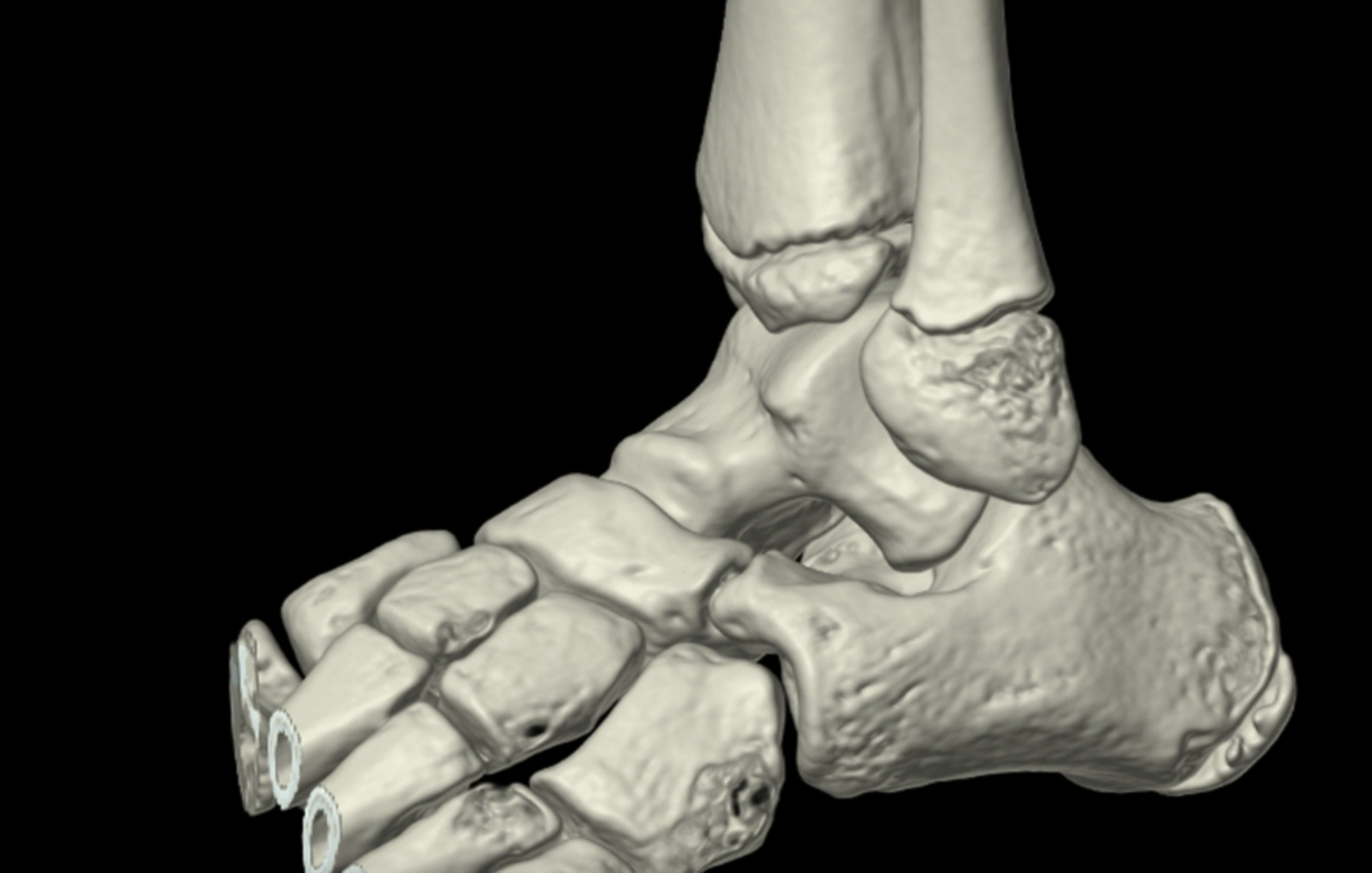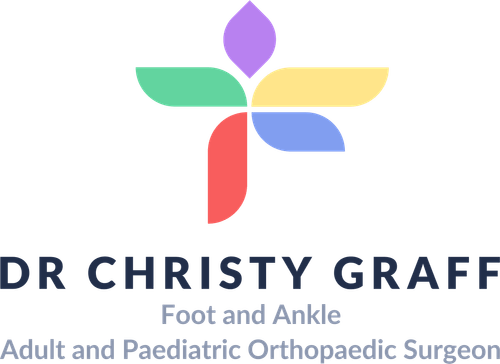Tarsal Coalition
What is Tarsal Coalition?
Tarsal bones are the small bones of your foot, not including the toe bones) such as the heel bone, the ankle bone, and around the arch of the foot). A tarsal coalition is a joint between two of these bones that is not meant to be there because the bones fail to separate in the womb. The other foot joints work differently and take more load due to this abnormal connection.

Impact of Tarsal Coalition on Anatomy and Health
The presence of a coalition affects the natural motion and mechanics of the foot. Instead of the bones moving independently, the connected bones create stiffness, which may lead to the following:
- Reduced Range of Motion: Limited joint mobility in the affected area can make walking and other activities difficult.
- Increased Stress on Adjacent Joints: Surrounding bones and joints compensate for the lack of movement, potentially leading to pain, inflammation, and early-onset arthritis.
- Abnormal Foot Mechanics: A coalition may result in structural problems like rigid flatfoot, where the arch of the foot collapses and does not return even when the foot is off the ground.
- Pain and Swelling: Inflammation around the coalition site can cause persistent pain, especially after physical activities.
- Gait Issues: Difficulty walking or limping may occur due to stiffness and discomfort in the foot.
Risk Factors for Tarsal Coalition
Tarsal coalition can affect individuals across all demographics, but some groups are at higher risk of symptoms from this condition. Not everyone who has a tarsal coalition experiences problems.
- Children and Adolescents: The condition often presents during late childhood or adolescence, as the bones and joints mature and harden, and patients start to feel the pain as they get bigger and heavier and stronger and put more force through the foot
- Individuals with a Family History: Tarsal coalition often runs in families, as it may be linked to genetic mutations.
- Athletes: High levels of repetitive stress or trauma to the feet often experience symptoms from a tarsal coalition.
Causes of Tarsal Coalition
Tarsal coalitions occur in the womb and are caused by a gene problem. Not all children with a tarsal coalition have a parent with one, and not all parents with a tarsal coalition have children with a tarsal coalition. No genetic testing is currently available. A new mutation in the womb is suspected to cause most tarsal coalitions. Some experts think 3 to 5 percent of all people have a tarsal coalition, and about half of these individuals have it in both feet.
Symptoms of Tarsal Coalition
Most tarsal coalitions do not become painful. Pain can develop usually between ages 8 and 16. During this time, the bones of the foot change from mostly cartilage to mostly bone. Therefore, the tarsal coalition becomes stiffer and causes more pain. Children also get bigger during this time and put more force through their feet.
The most common symptoms include:
- A painful foot, often after sport
- Swelling
- A stiff, flat foot
- Recurrent ankle sprains
Prevention of Tarsal Coalition
Since most cases of tarsal coalition are congenital, prevention is not possible. However, steps can be taken to minimise symptoms or avoid complications:
- Proper Footwear: Wearing supportive shoes can help reduce strain on the foot and prevent worsening symptoms.
- Avoiding Overuse: Reducing repetitive stress on the feet, particularly for athletes, can help manage symptoms.
- Regular Physical Activity: Moderate, low-impact exercises, such as swimming or cycling, can help with symptoms.
- Strengthening and Stretching: Physical therapy exercises to strengthen the foot and improve flexibility may reduce discomfort and limit complications.
Types of Tarsal Coalition
Tarsal coalition is classified based on the location of the abnormal connection and the type of tissue involved. The most common types include:
- Based on Location:
- Calcaneonavicular Coalition: The most common type involves an abnormal connection between the calcaneus (heel bone) and the navicular (midfoot bone). It usually presents during adolescence.
- Talocalcaneal Coalition: The coalition is between the talus (ankle bone) and calcaneus. This type often develops symptoms later than calcaneonavicular coalitions and is more difficult to treat.
- Other Rare Coalitions: These include connections between other tarsal bones and usually occur in association with other medical conditions.
- Based on Tissue Composition
- Cartilaginous Coalition: The connection is made up of cartilage
- Fibrous Coalition: The bones are connected by dense fibrous tissue. This may allow some movement.
- Osseous Coalition: The bones are fused together, making this type the most rigid.
Stages of Tarsal Coalition
Tarsal coalition progresses in stages, which can vary in severity depending on the individual's age, activity level, and the type of coalition:
- Asymptomatic Stage: The coalition exists, but there are no noticeable symptoms. This stage often occurs in childhood.
- Symptomatic Stage: As the bones ossify (harden), pain, stiffness, and other symptoms emerge, typically in adolescence or early adulthood.
- Compensatory Stage: Adjacent joints and soft tissues compensate for reduced motion, leading to overuse, inflammation, or arthritis in surrounding areas.
- Chronic Stage: Prolonged, untreated coalitions may result in permanent changes such as rigid flatfoot, chronic pain, and arthritis.
Diagnosis of Tarsal Coalition
X-rays can sometimes show the coalition, but a CT and/or MRI may be required for the final diagnosis. CT and MRI are three-dimensional, show soft tissue, and will be needed before surgical excision.
Usually, both feet are imaged, even if only one is painful, as the patient can have the condition in both feet.
Management and Treatment of Tarsal Coalition
The primary goal of treatment is to reduce pain. Treatments can include:
- Casts or walking boots and/or rest
- Orthotics - special, custom-made shoe inserts that support affected joints
- Injection of an anaesthetic and a steroid, such as cortisone, for temporary pain relief
- Anti-inflammatory medications
- Stretching and physiotherapy
If pain persists or recurs despite nonoperative measures, surgery may be recommended. The type of surgery depends on the type, size, and location of the coalition. The most common type, the calcaneonavicular coalition, usually responds to surgery. The talocalcaneal type can be more difficult to excise and is often bigger. In more severe cases, surgery aims to limit the range of motion in the joint that causes pain. In this instance, the surgery involves fusing affected joints to reduce pain.
What if Tarsal Coalition is Untreated?
Leaving tarsal coalition untreated may lead to several complications, including:
- Chronic Pain: Persistent discomfort in the affected foot, especially during physical activities or prolonged standing.
- Progressive Stiffness: Worsening restriction of movement in the foot and ankle.
- Flatfoot Deformity: Rigid flatfoot may develop or worsen, causing additional strain on the joints and muscles.
- Early-Onset Arthritis: Increased stress on adjacent joints can accelerate wear and tear, leading to arthritis at a younger age.
- Gait Abnormalities: Untreated coalitions can alter walking mechanics and potentially affect other body parts, such as the knees, hips, and spine.
- Reduced Quality of Life: Persistent symptoms and functional limitations can interfere with daily activities and sports participation.
